Idoia Cuesta: Fusion of Art and Artisan
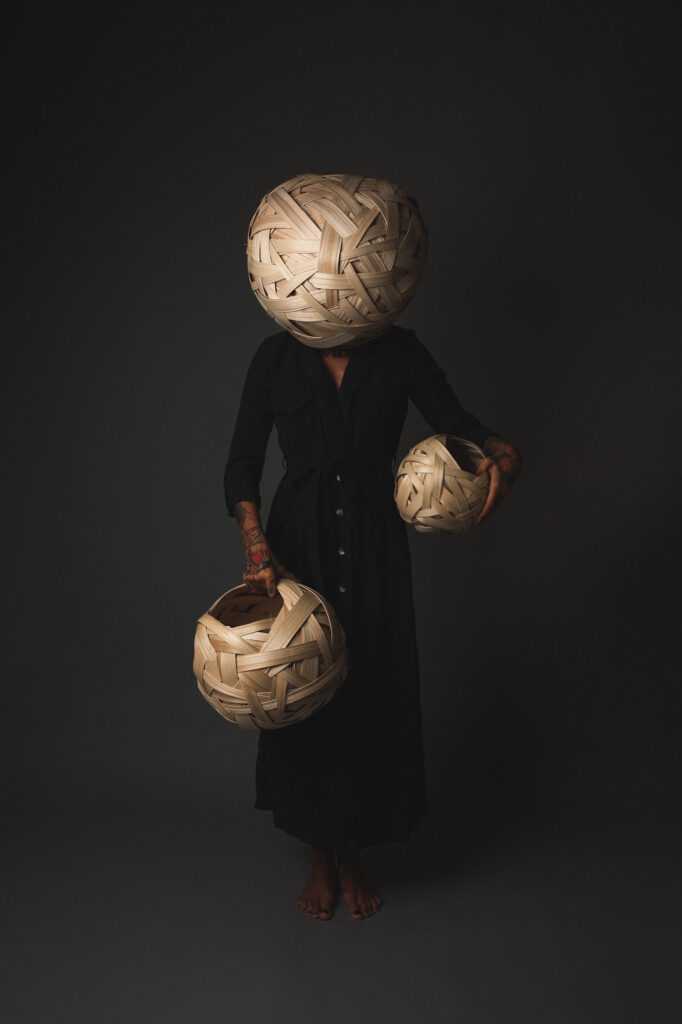
When you view the pieces of Idoia Cuesta, the line between art and artisanship begins and ends as one. She describes her work as the “fusion of basketry with textiles and the versatility of the resulting piece through the combination of organic materials with different craft techniques.”.
A longstanding admirer of her work, I was happy by her agreement to participate in this feature article.
Her range is wide. She has produced pieces for luxury Spanish fashion brand Loewe, installations for high-street retailers Zara Home and Adolfo Domínguez, and fashion pieces for Maya Hansen.
Based in Spain’s northern community, Galicia, her surroundings are integral to her process. “I live and work in rural areas, in an area of Galicia declared a Biosphere Reserve. The nature and landscape that surrounds me in my day to day, the forests, the Miño river with its island in the middle, the osiers that I grow, and the storks that weave their nests not only inspire me, but they offer me the opportunity to create sustainable pieces, with organic shapes that convey the nobility and warmth of the raw materials I use”.
Castanea Collection
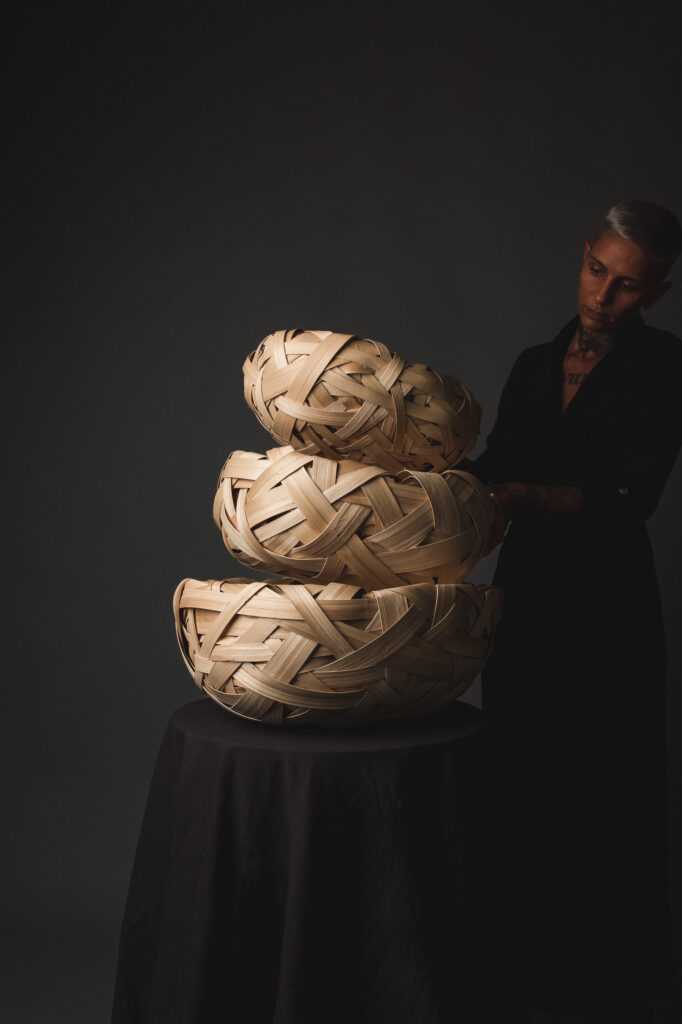
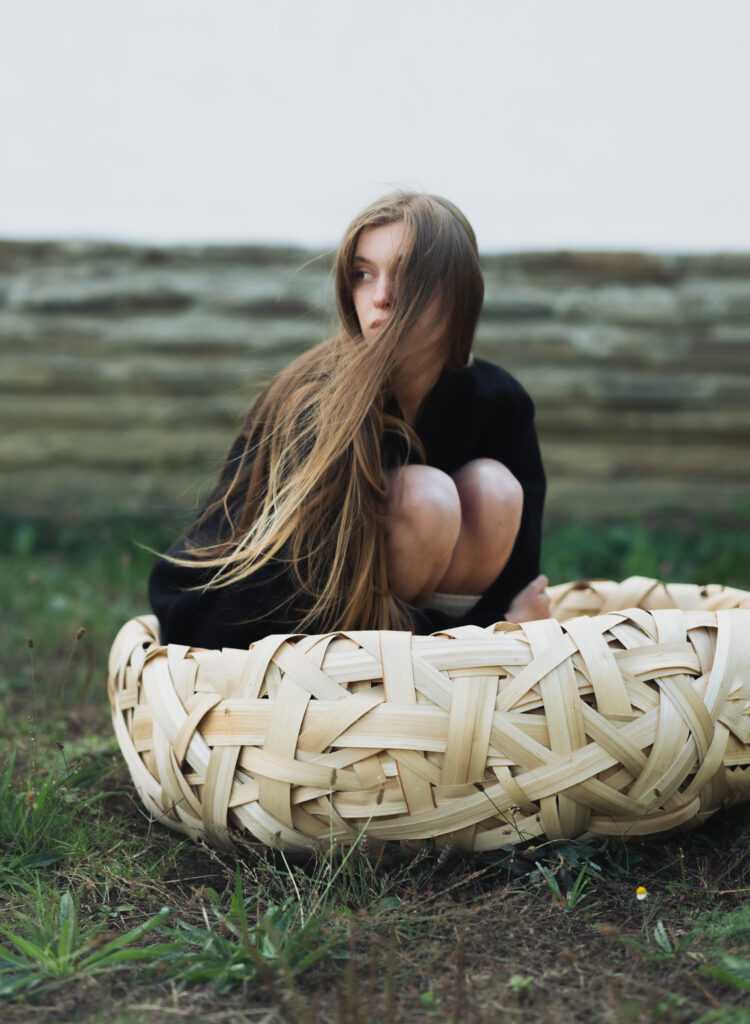
The pieces of the Castanea series are “Brave. They break the rules. They carry the tradition into the future on a one-way lightning trip with no return”.
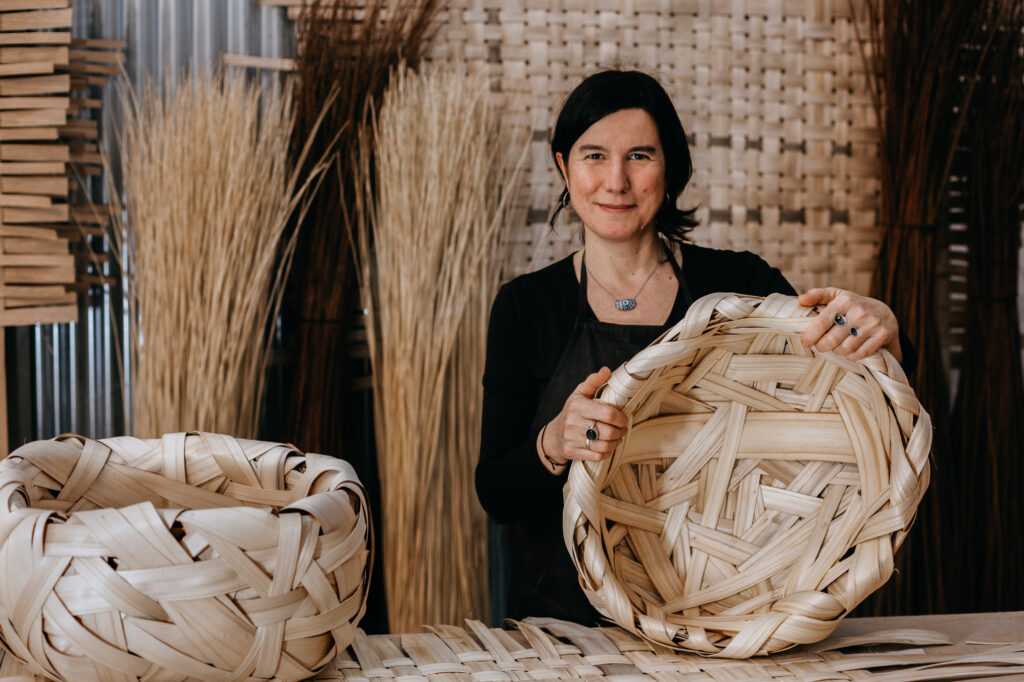
Abisal Collection
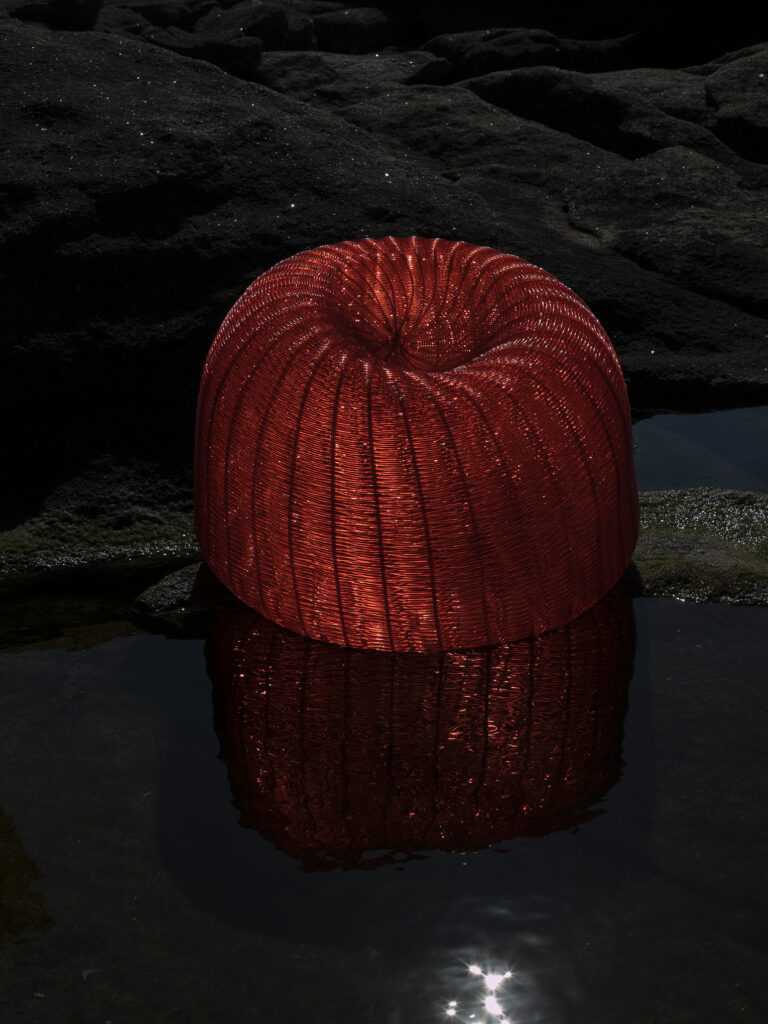
The inspiration for the Abisal series arose on the Lugo coast, near a fishing port where Idoia used to spend time. “The search for new materials for my creative activity led me to a store selling all kinds of objects related to fishing gear. They invited me to the warehouse, where rolls of nylon line in different colors and thicknesses caught my interest. Feeling the material, I fell in love with its plasticity. Its red translucency captivated me. I went to buy the last rolls stored there, to the disbelief of the store owners, who did not fully understand my obvious enthusiasm. They told me sailors used this line for an artisanal fishing technique known as surface longlining.”.
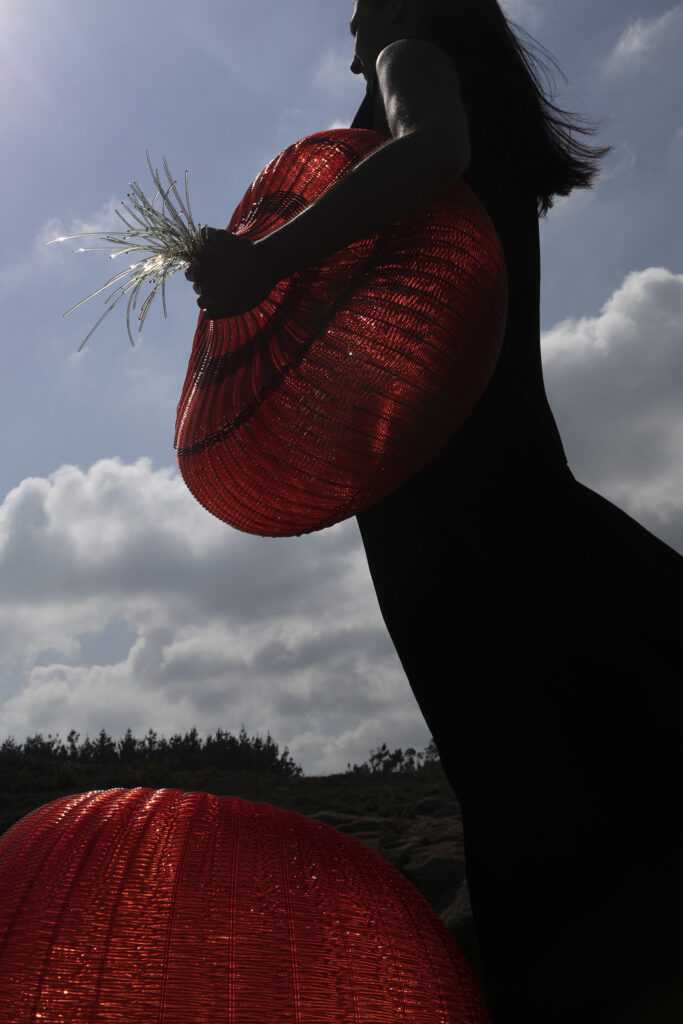
The Abisal series brings together two aspects of her life and interests as a creator. It synthesizes her experiences and personal desires since her arrival in Galicia almost thirty years ago, marine zoology laboratory research, days of diving and sampling on the coast, and the need to always have and feel close to the sea, even through objects that evoke it. Abisal intentionally searches for organic forms that remind us of marine forms that we have in our collective imagination that evoke an inhospitable, fascinating, beautiful world. Secondly, the purpose of the series has been to continue testing and experimenting with new materials, a leitmotif of her career.
Chance is a fundamental factor in her process. “The encounter with the nylon line has revealed itself to me as a happy and productive event that has allowed me to give unusual plasticity to the pieces. It opens up a new horizon of possibilities for my work in which the endless search for new materials and shapes is of central importance when it comes to going beyond the traditional limits of basketry.”.
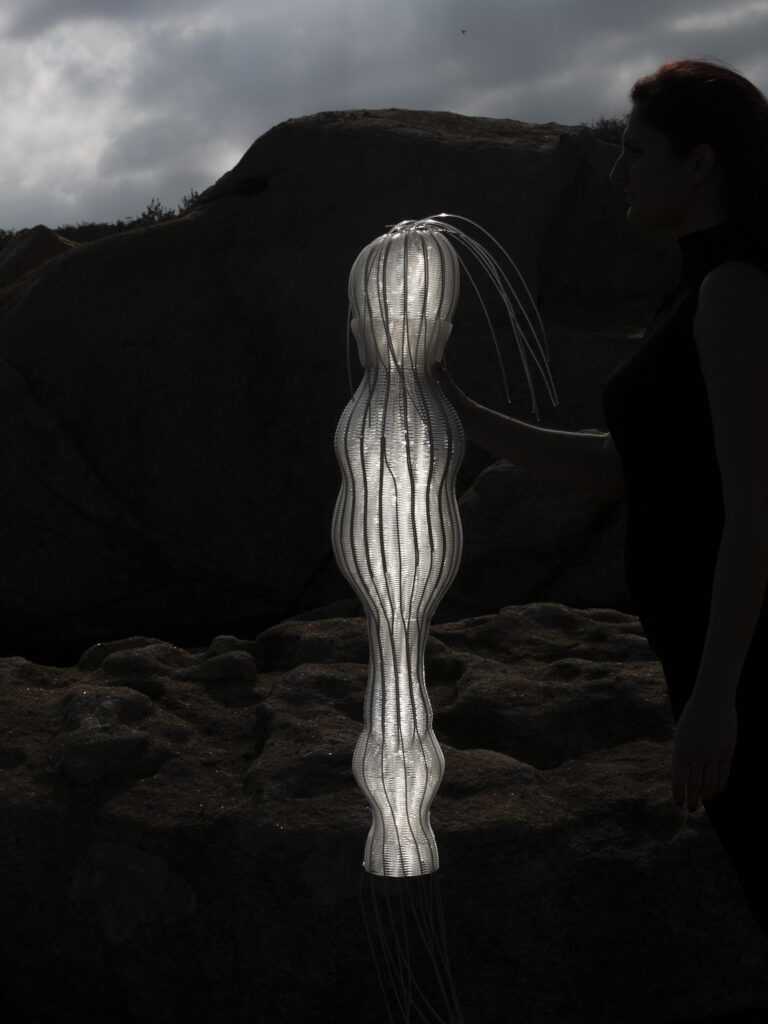
Background and Inspiration
Briefly describe your background and the beginnings of your formal studies.
I always wanted to study fine arts because I really enjoyed watching art exhibitions and delighted in them. Since I was little, I was curious and had the facility to work with my hands. My father and my grandfather were highly skilled at manual labor. Ultimately, I studied biology, which I don’t regret because I use it as a source of study and inspiration. After a few years of training as a textile artisan in Galicia, I set up my workshop in Outeiro de Rei, Lugo, in the center of the reserve of the Terras do Miño biosphere.
Technique
What are you best known for?
My work is contemporary basketry, a renewal of traditional basketry with a more current vision. I apply all the traditional weaving techniques to new materials.
Is there any Spanish or regional tradition or reference regarding your technique, design, or inspiration?
All my references relate to Galicia, known for its famous Camino de Santiago. Galicia is a territory that has preserved popular culture and tradition that inspired me to learn traditional basket weaving. From there, I sought to apply the traditional techniques to new materials. An example is the textile collection that I worked with felted wool filament.
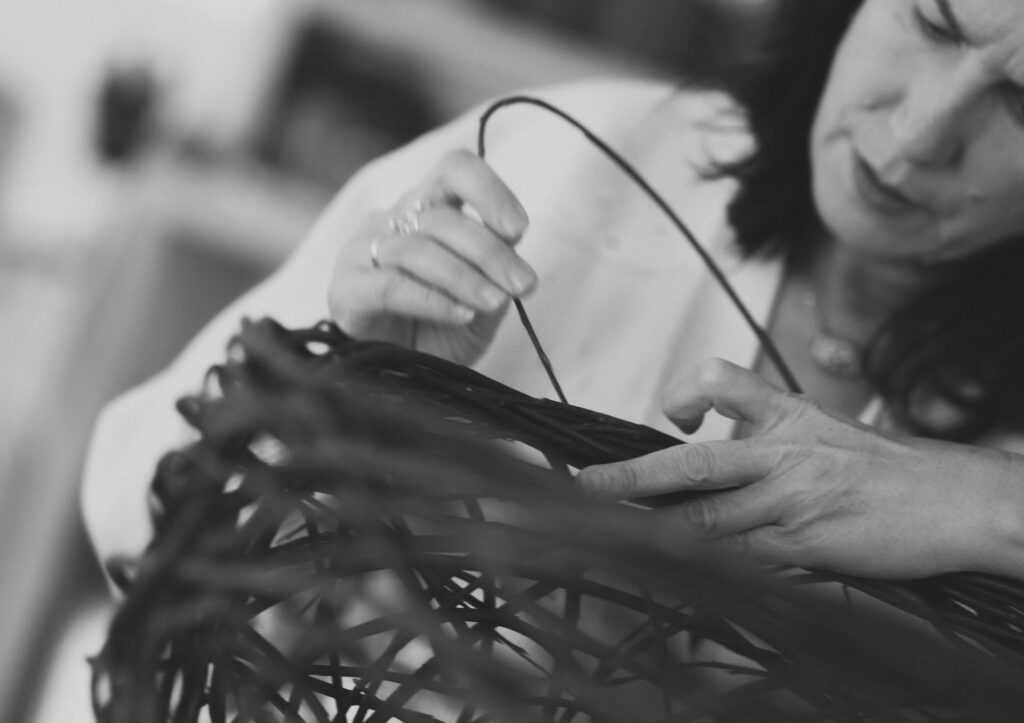
Sustainability
Do you integrate any environmental considerations into your processes?
I use wicker sticks that I cultivate. I work with traditional natural basketry fibers, like chestnut sheets, jute rope, and hemp. I love playing with recycled materials, such as newsprint, tetra bricks, and telephone cables, and with new materials, such as fishing lines (nylon).
The Market in Spain
What is the importance, if any, of artisan markets and organizations for showcasing your work?
Spain has many artisans in different trades, where fairs and craft markets are alive and popular. It has a network of fairs and professional exhibitions at various times throughout the year.
How can local, regional, or national governments promote crafts and work of artisans in Spain? Is there room for improvement?
There is a demand for new marketing channels for handicrafts, be it at fairs, art galleries, art exhibitions, and events such as the Madrid Design Festival. Within the world of artisanship, there is a need for improvements, including the need for training, essential for developing the next generation.
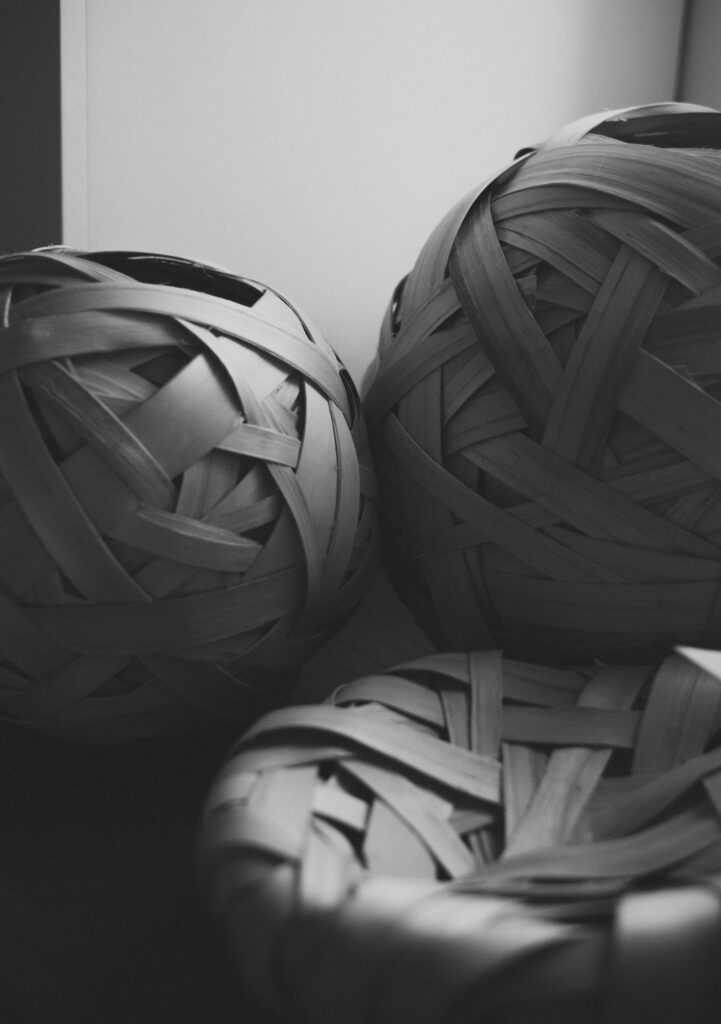
Distinctions and Plans
Are there any notable recent events, recognitions (awards), or developments?
Recognition for the National Craft Award in the Product Category in 2014 with the Pandeira collection. The Galician Craft Award 2021, with the Abisal collection. A Madrid Craft Week Award in 2022. I participate in international professional exhibitions and fairs, such as Maison&Object, and the Formex Fair in Stockholm, thanks to the programs of the Foundation for Crafts and Design of Galicia. I am now breaking ground by developing artistic work for galleries and exhibitions.
What are your plans for the company for creative endeavors and market expansion?
We are collaborating with interior design companies to develop projects and working with international architectural and design studios. Concerning market expansion, I continue to work on developing prototypes with haute couture firms, such as Loewe.
What is your dream project?
My dream project is to expand my studio and continue working with a multidisciplinary team of people full of creativity who maintain craft traditions but combine them with contemporary creation and design.
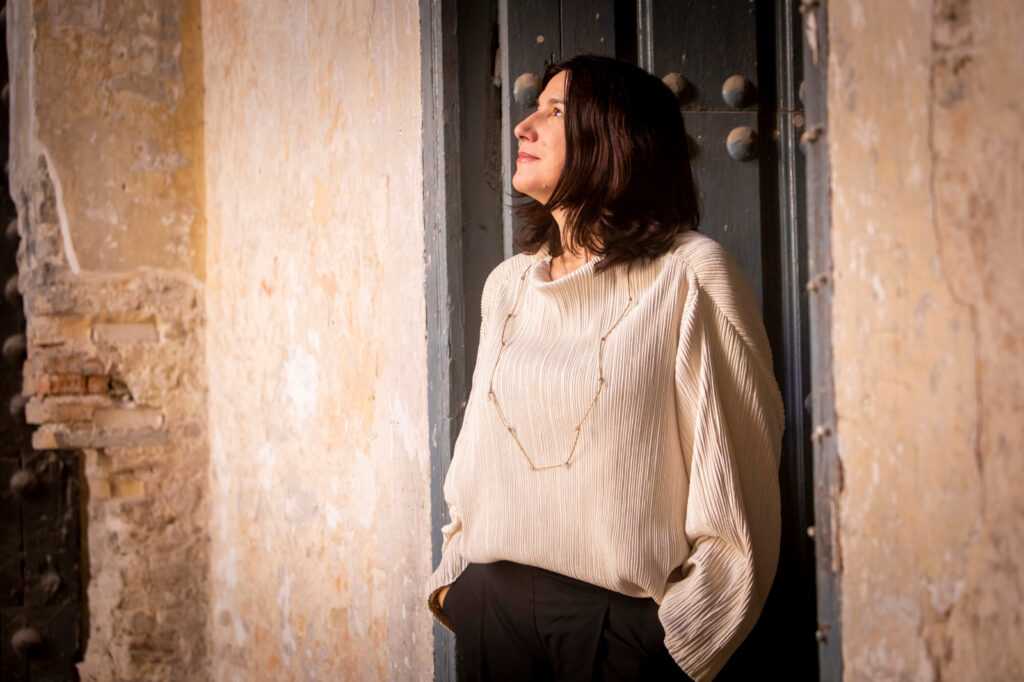
Place
What city do you live in?
In the parish of Cela in Outeiro de Rei, which is part of the Galician province of Lugo,
Are there must-see places in your city or community that visitors interested in art, craft, design, and architecture should see?
The Roman Walls of Lugo built in the later part of the third century is a UNESCO World Heritage site. There are many Celtic archaeological finds, such as the fort of Viladonga. We also have the cathedral of Santa María de Lugo and historical deposits. There are also traditional obradoiros (workshops) and museums.
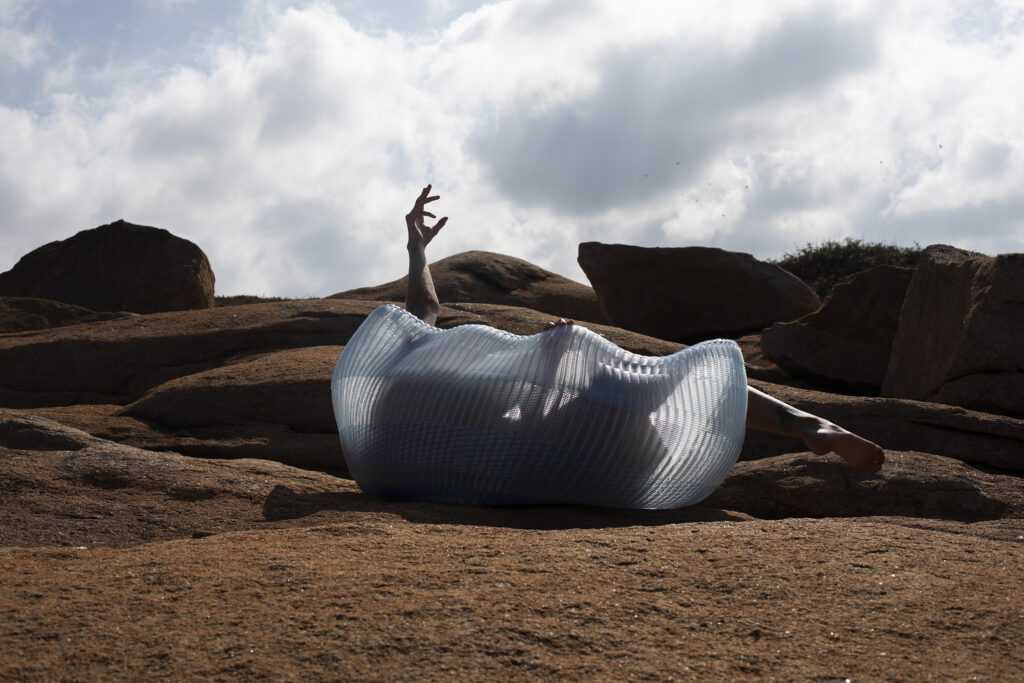
Idioa is a member of SACo, (Sociedad de Artesanía Contemporánea), the association of contemporary artisans in Spain whose mission is to showcase creations by artisans and designers from Spain who work in various disciplines.

Some really interesting details you have written.Assisted me a lot, just what I was searching for : D.
Thank you.